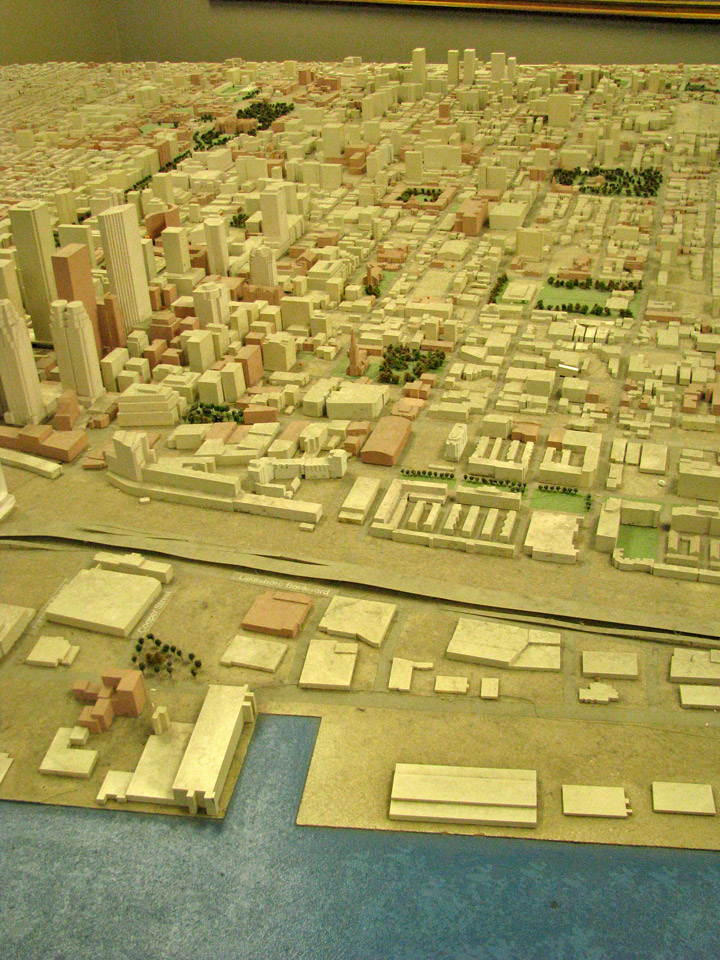

City Hall
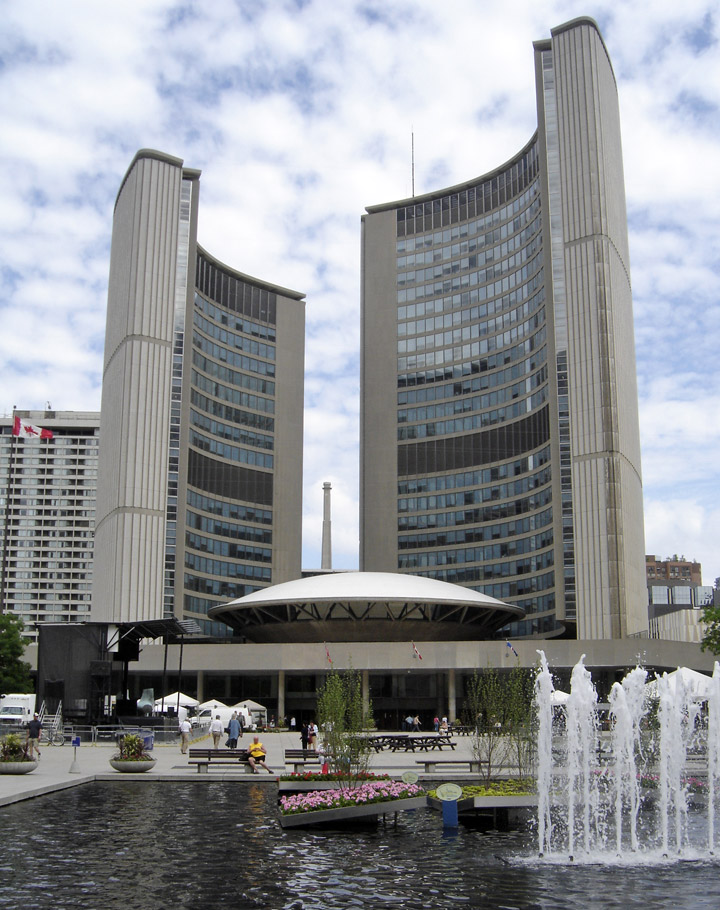
City Hall of Toronto
The City Hall of Toronto, Ontario, Canada is one of the most distinctive landmarks of the city. Designed by Finnish architect Viljo Revell (with Heikki Castrén, Bengt Lundsten, Seppo Valjus) and engineered by Hannskarl Bandel, the building opened in 1965; its modernist architecture still impresses today. It was built to replace Old City Hall which was built in 1899.

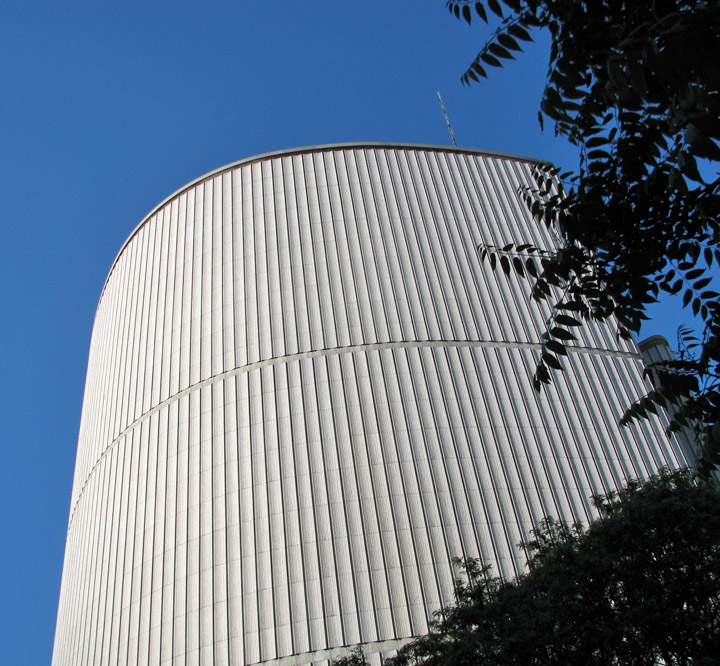
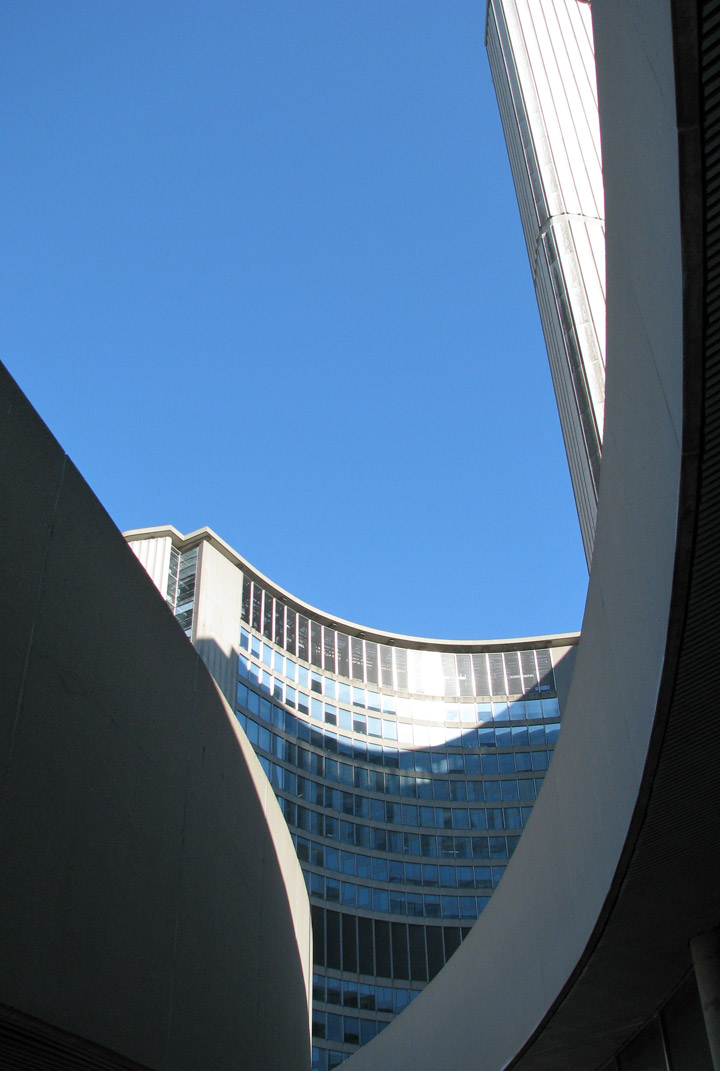
The building is on a large site on the north side of Queen Street West between
Bay Street and Osgoode Hall. The address is 100 Queen Street West, and its
postal code is M5H 2N2. It is on the site of Toronto's first Chinatown. The
population of the large area was displaced, mostly to the northwest of the site.
Much of the Chinese population residing in the district had to be relocated
before construction of the new City Hall could begin.

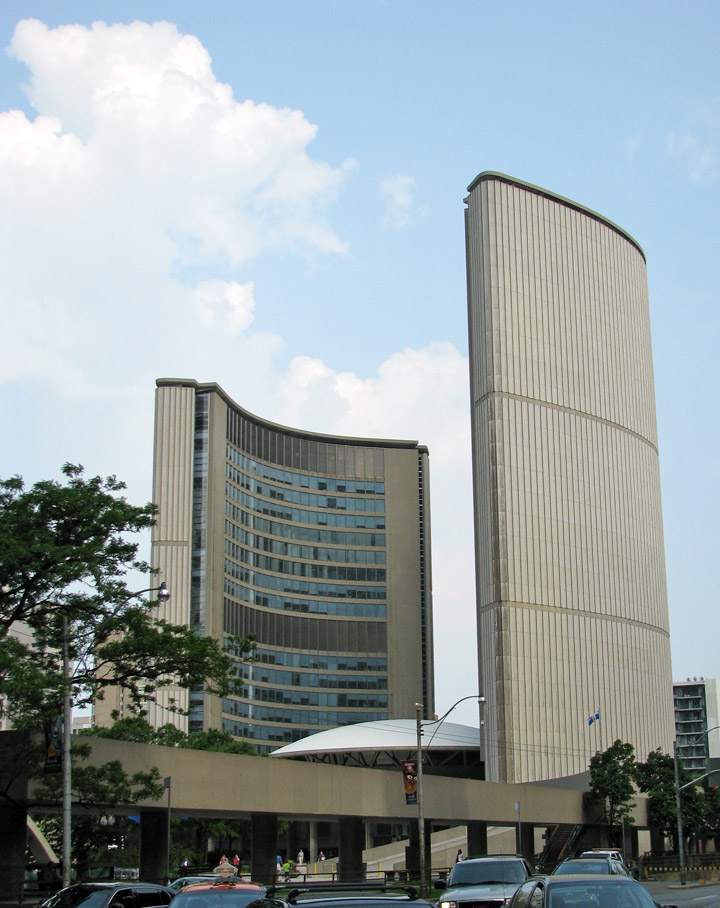

Toronto had been looking to build a more modern city hall for several years. In
1954, a partnership of three of Toronto's largest architectural firms was
selected to do the design. The result, presented in November 1955, was an
extremely conservative structure that was called "sterile" by Frank Lloyd Wright
and "very poor" by Walter Gropius. It died when voters rejected plans for a new
$18 million city hall in a December 1955 referendum. Led by Mayor Nathan
Phillips, Toronto city council decided in 1956 to have an international
competition to choose the new design under terms drawn up by the International
Union of Architects. This caused some controversy as some felt the work should
be done by a Canadian. A five-person panel of judges was drawn up with some of
the world's greatest architecture experts. Eric Arthur served as advisor. Over
500 designs were submitted, from which eight semi-finalists were selected. In
September 1958, Revell's design was selected by three of the judges, including
Eero Saarinen. One of the two dissenting judges was William Graham Holford, who
was skeptical that the design could be built within the $18 million budget set
by the city. Revell received a $25,000 prize plus what was estimated to be $1
million in fees to supervise construction. He complained that not enough credit
was given to his design collaborators, Heikki Castren, Bengt Lundsten, and Seppo
Valjus, and asked that all names be listed as the architects. Construction began
in 1961 and the building was completed four years later. Revell died in 1964
before the project was finished.
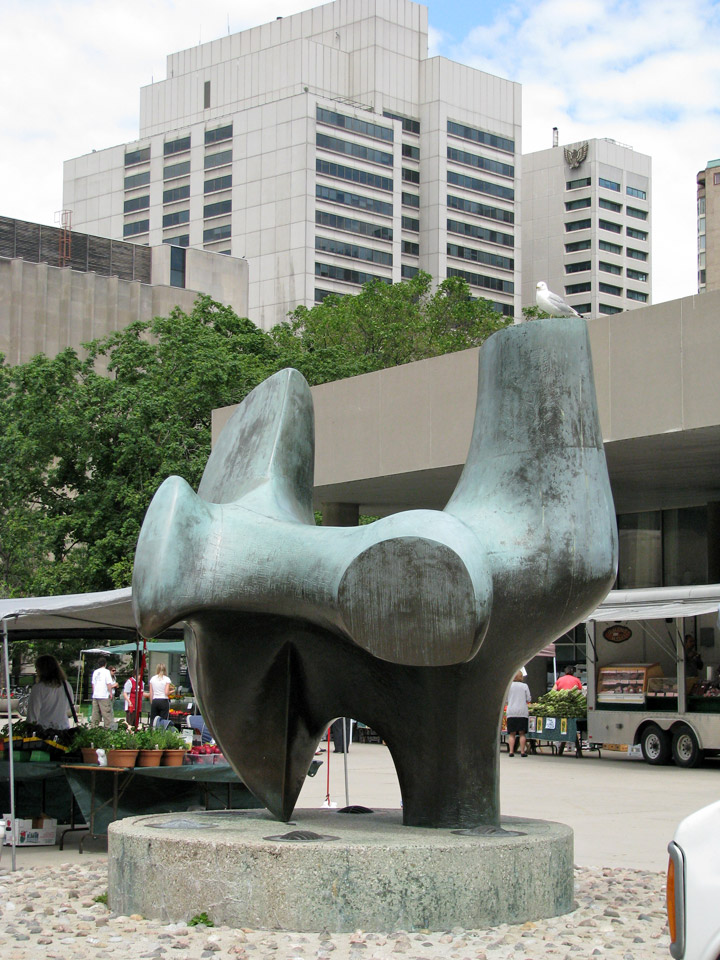
Henry Moore's Archer

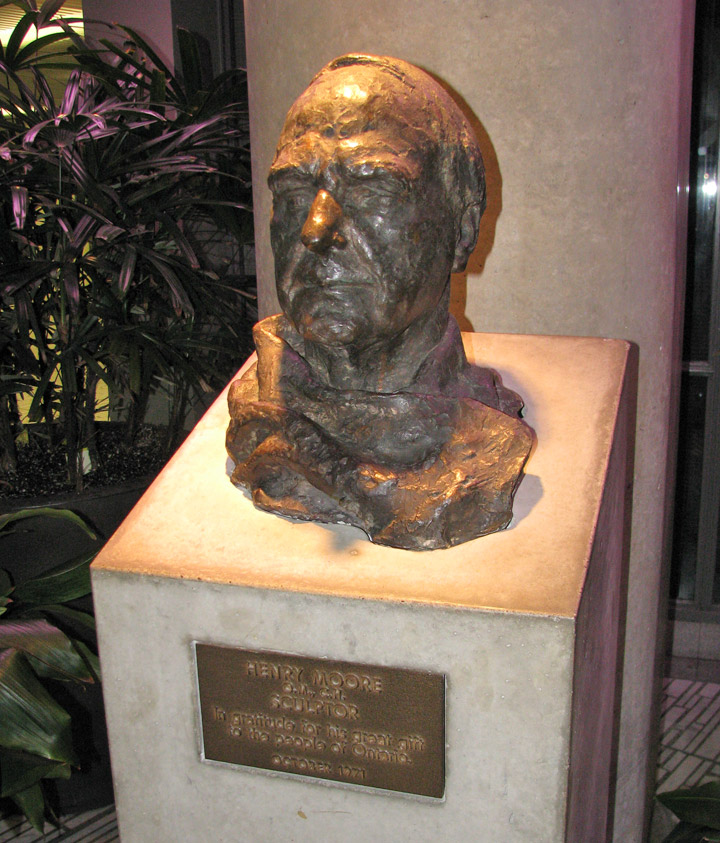
Henry Moore
While the building's base is rectangular, its two towers are curved in cross-section and rise to differing heights. The east tower is 27 storeys (99.5 metres) tall and the west tower is 20 storeys (79.4 meters). Between the towers is the saucer-like council chamber, and the overall arrangement is somewhat like two hands cradling the chamber. The outer concrete surfaces of the towers have been ribbed, to prevent collapse of the fabric as a result of the expansion of the exterior surfaces, and the tearing apart of the fabric as a result of differences in air pressure on the two sides of each wing-like tower during the high winds characteristic of the Great Lakes. The north, west, and east elevations are plain in contrast with the south elevation; each presents a view of unrelieved concrete. To the east of the square is the former City Hall (locally known as Old City Hall) which is now a courthouse.
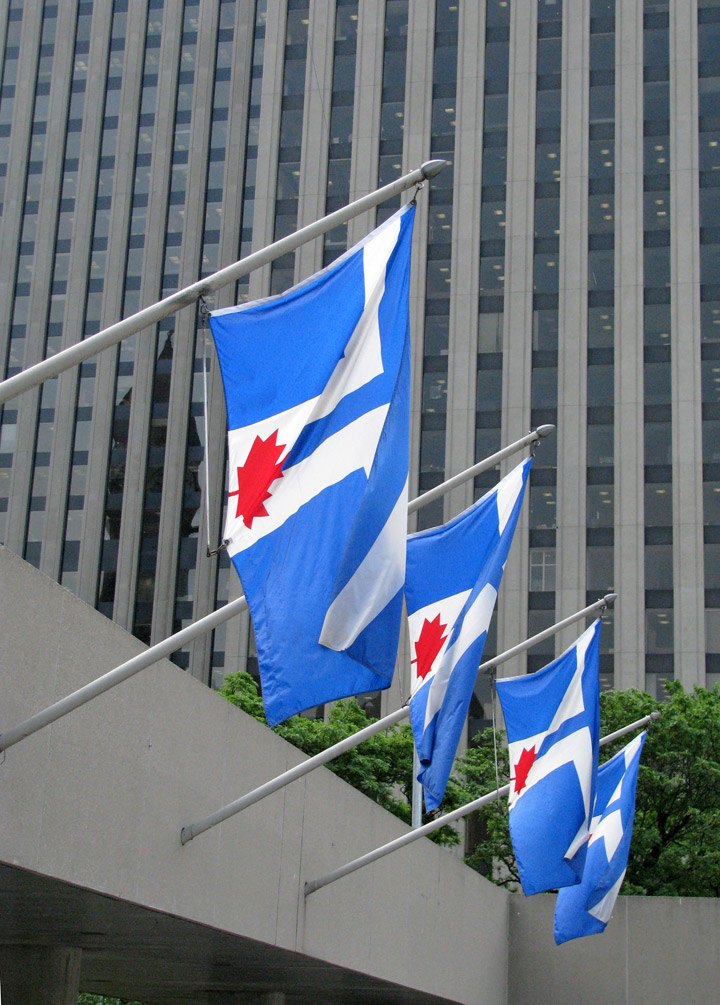
City of Toronto flags
From the air, the building is seen as a giant unblinking eye, thus the building's original nickname of "The Eye of Government".
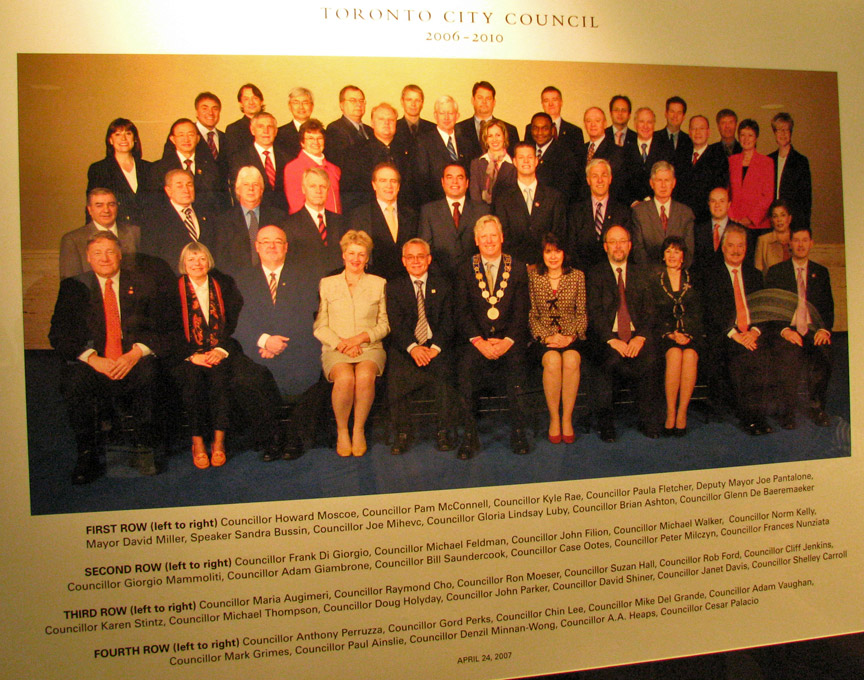
City Council
When finished, the building caused a storm of controversy among many people, who
felt that it was extremely futuristic, too futuristic for the city. Even 40
years later, it still appears very modern.
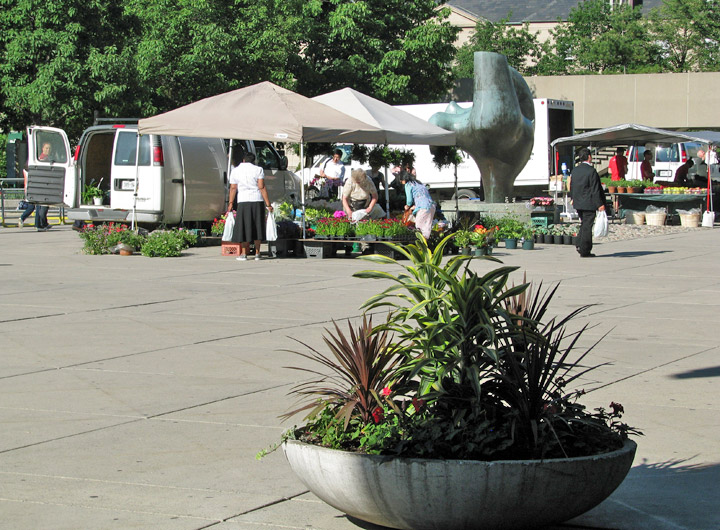
Nathan Phillips Square

one of its distinguished residents
In front of the main structure is Nathan Phillips Square, a public space containing a fountain/skating rink.
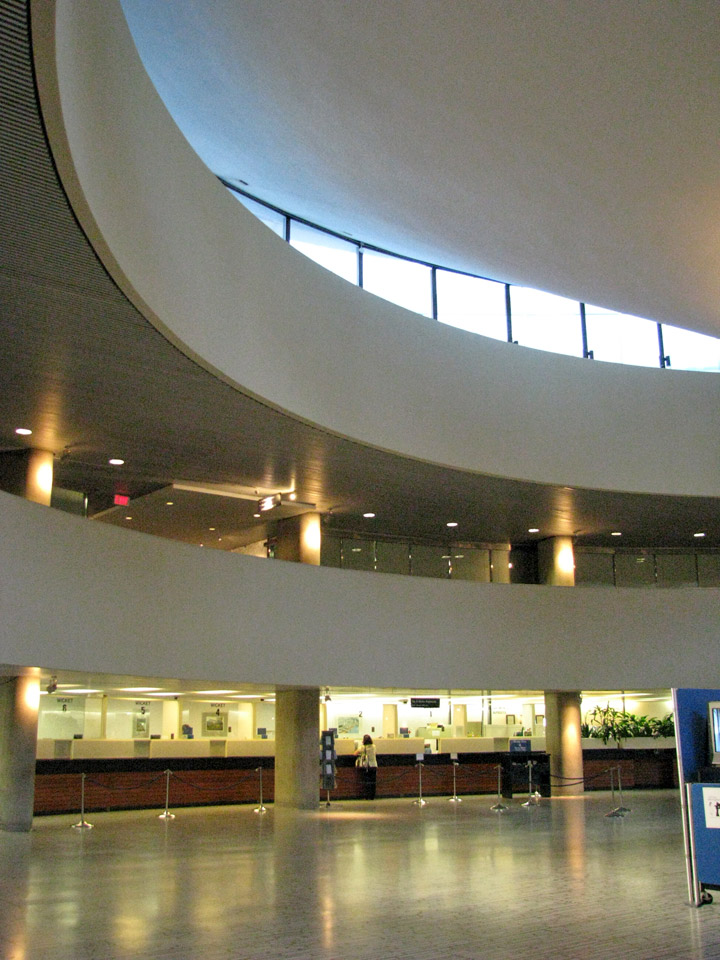
City Hall Interior
The square is surrounded by an elevated walkway, with connections to City Hall, the square below, and the Sheraton Hotel across Queen Street.
Text from Wikipedia
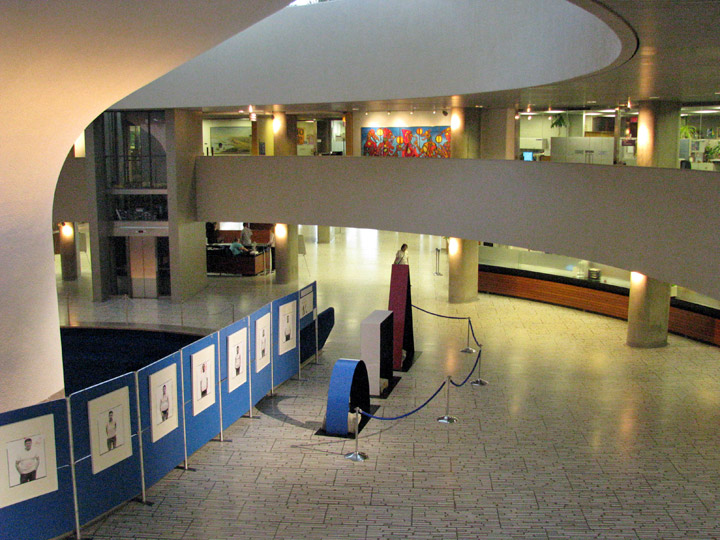
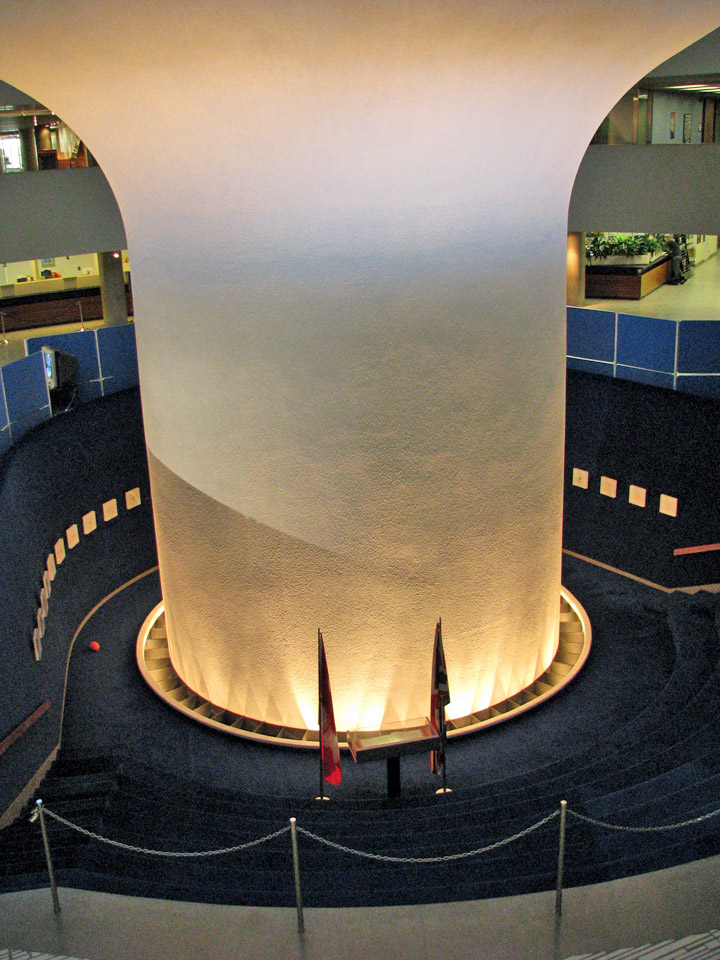
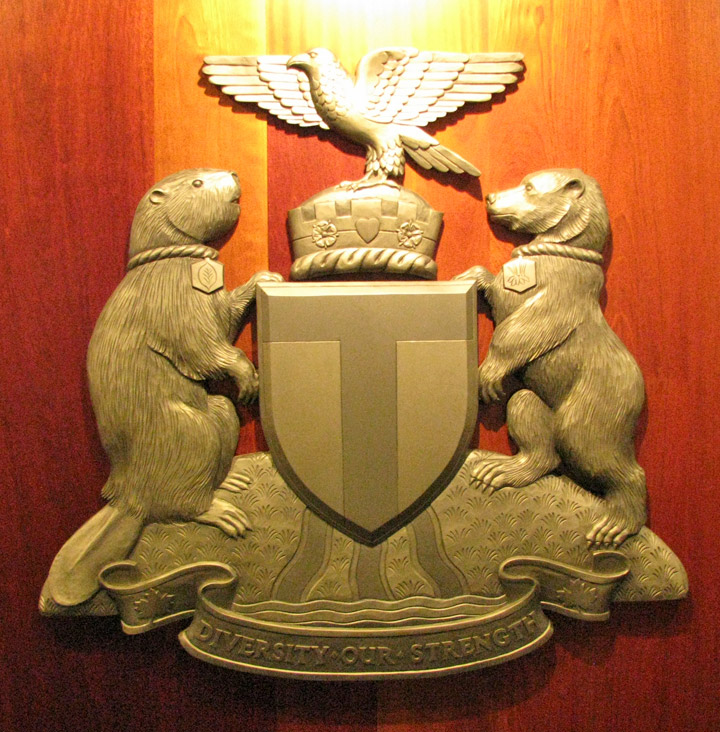
Beaver and the Bear
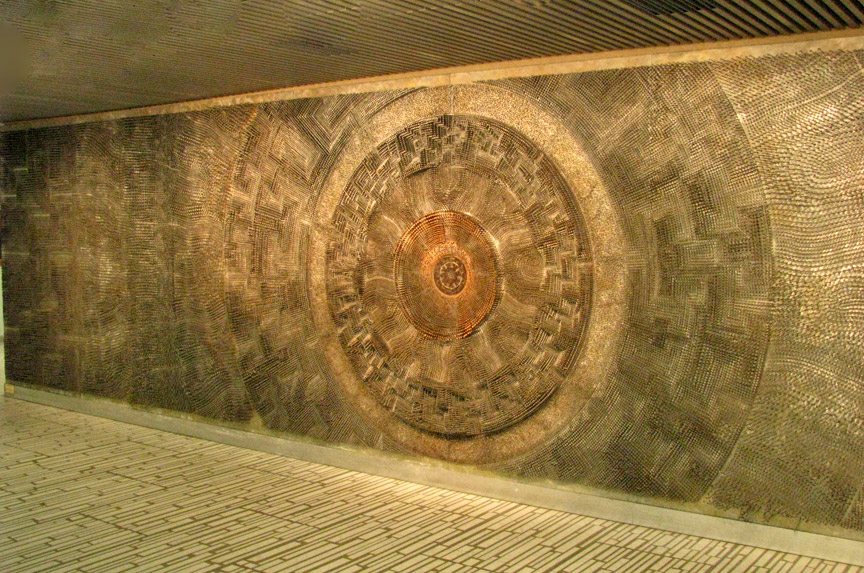
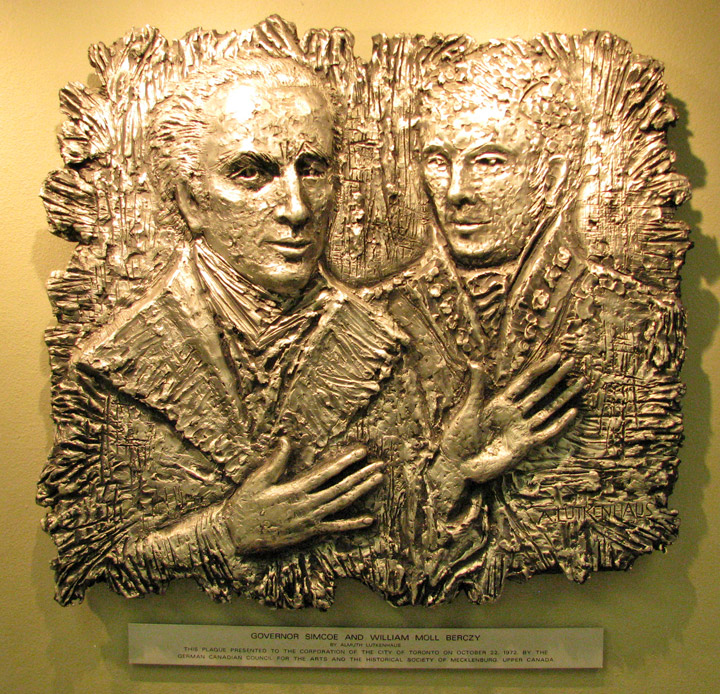
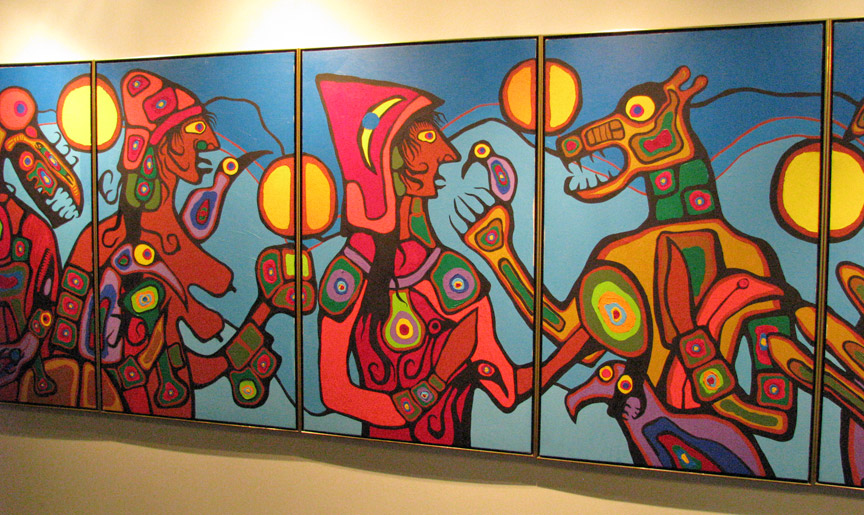
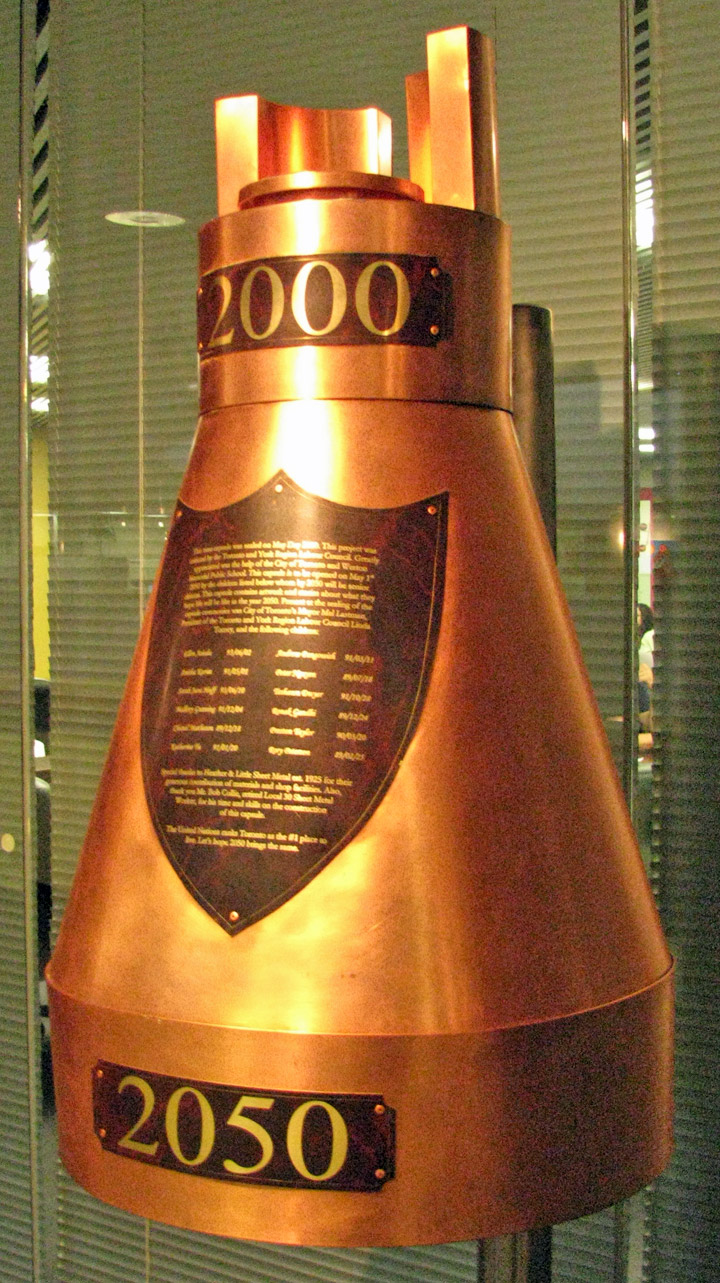
time capsule


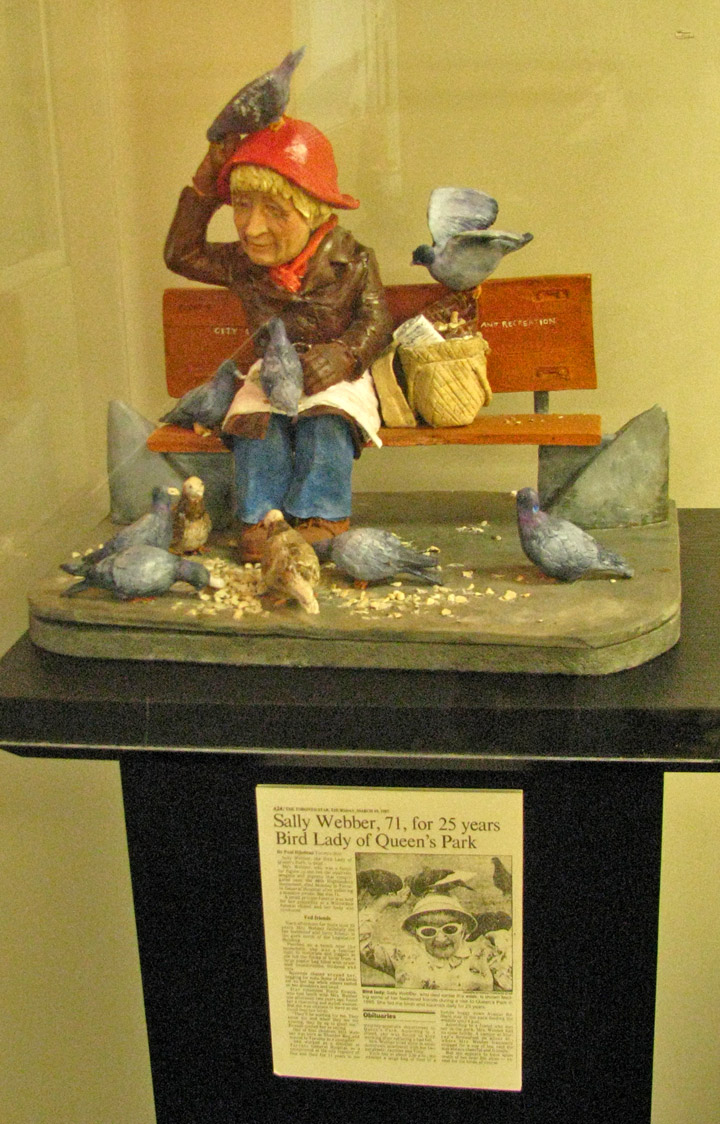
Bird Lady of Queen's Park
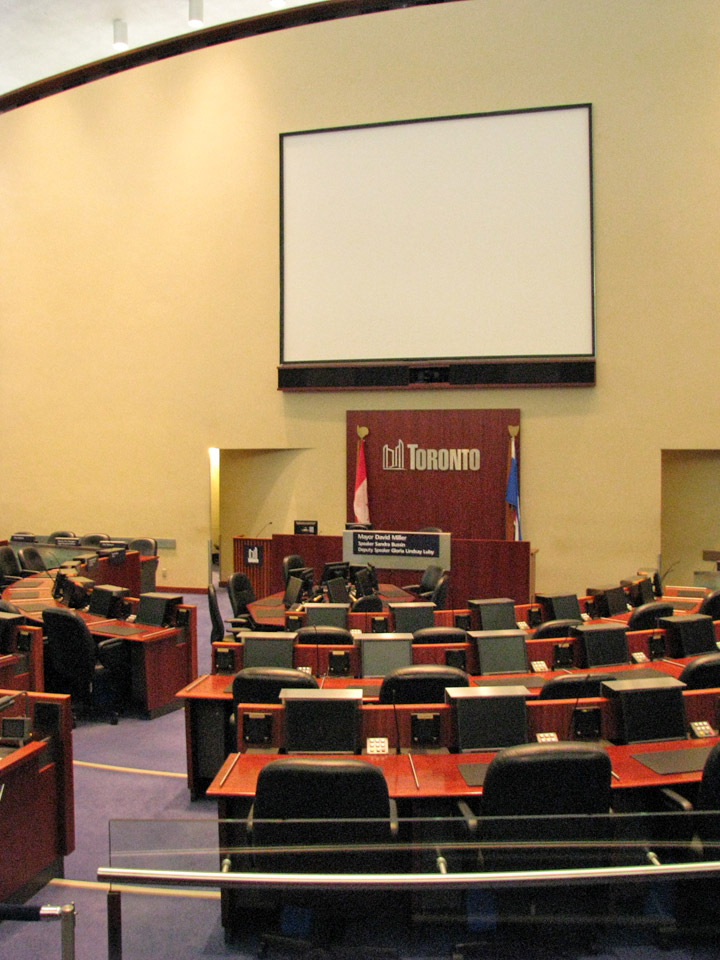
Council Chamber
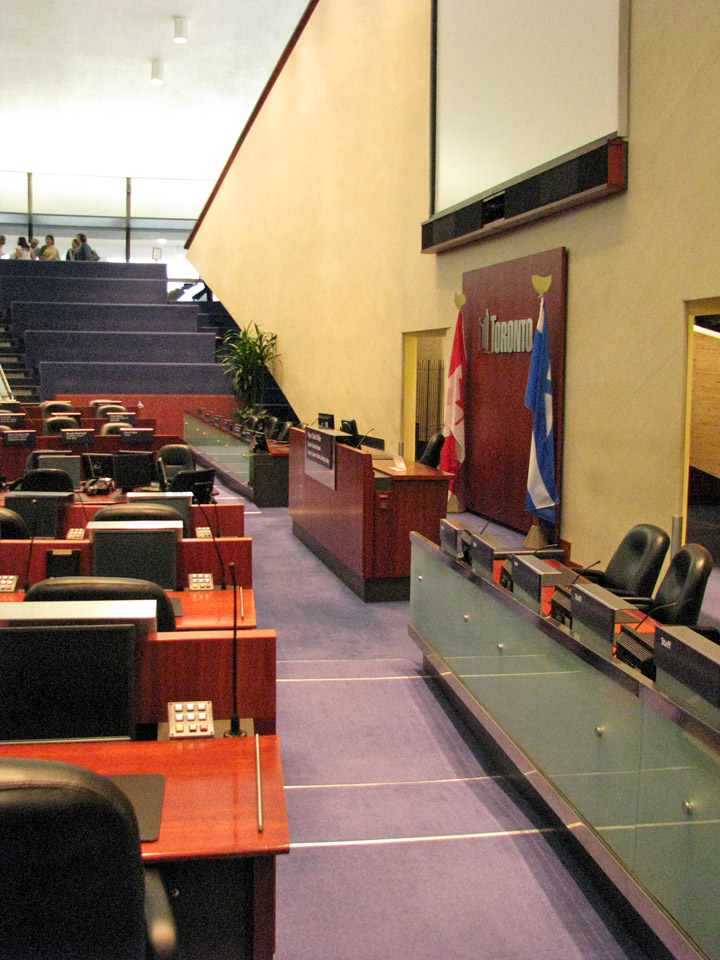

John Piper. explaining the function of city government
Old City Hall built in 1899
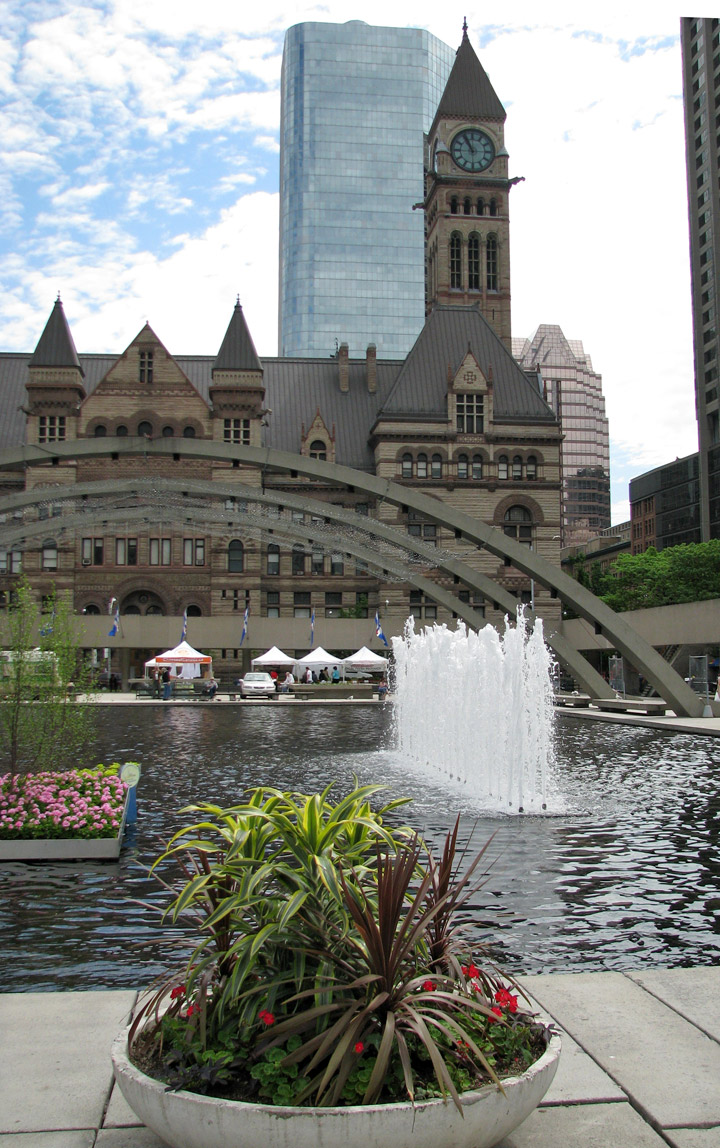
Old City Hall as seen from Nathan Phillips Square
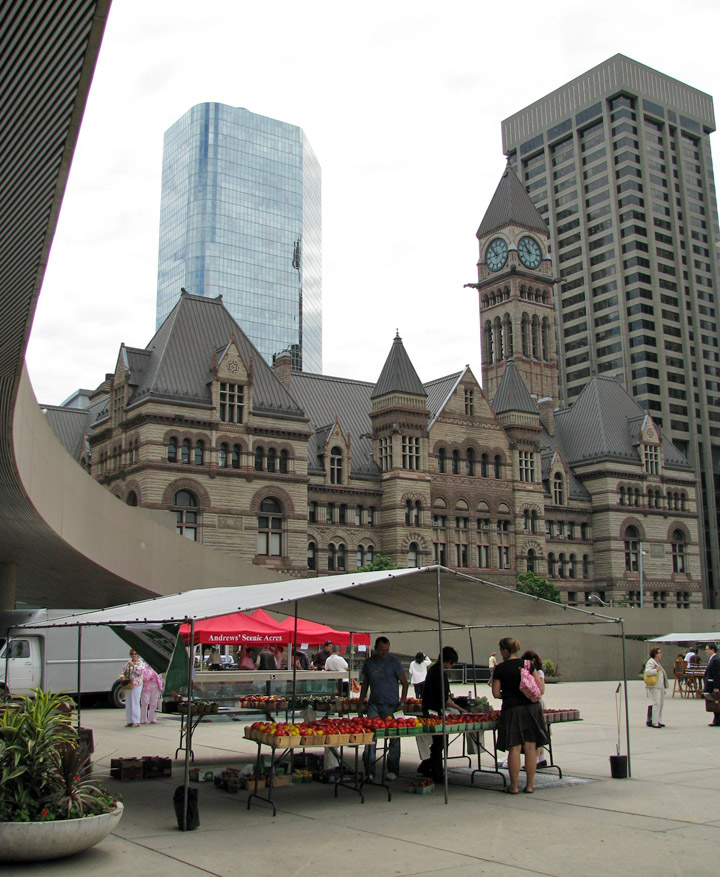
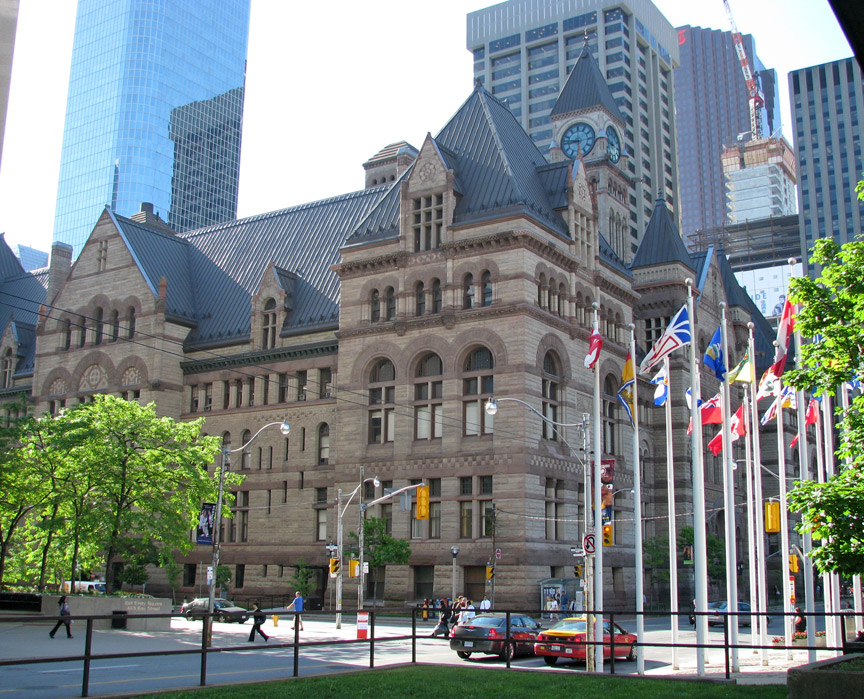
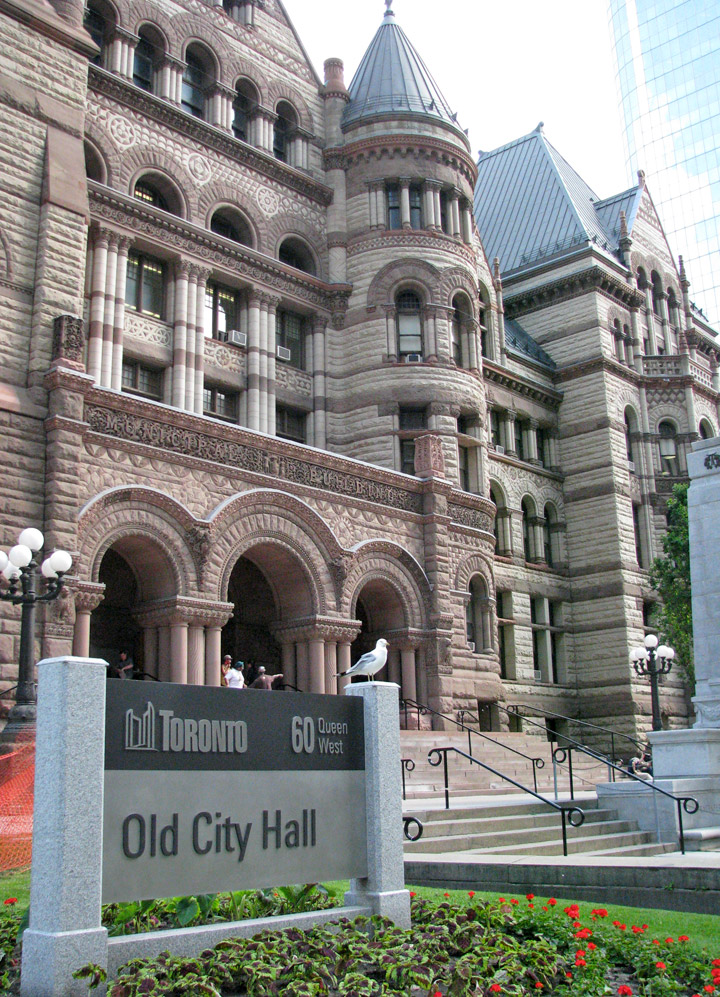
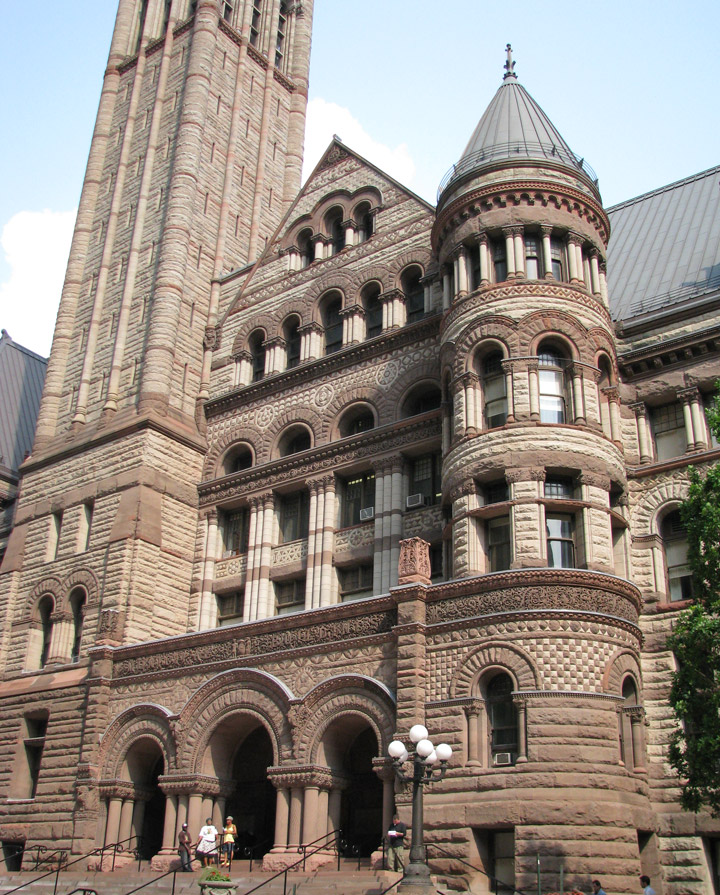


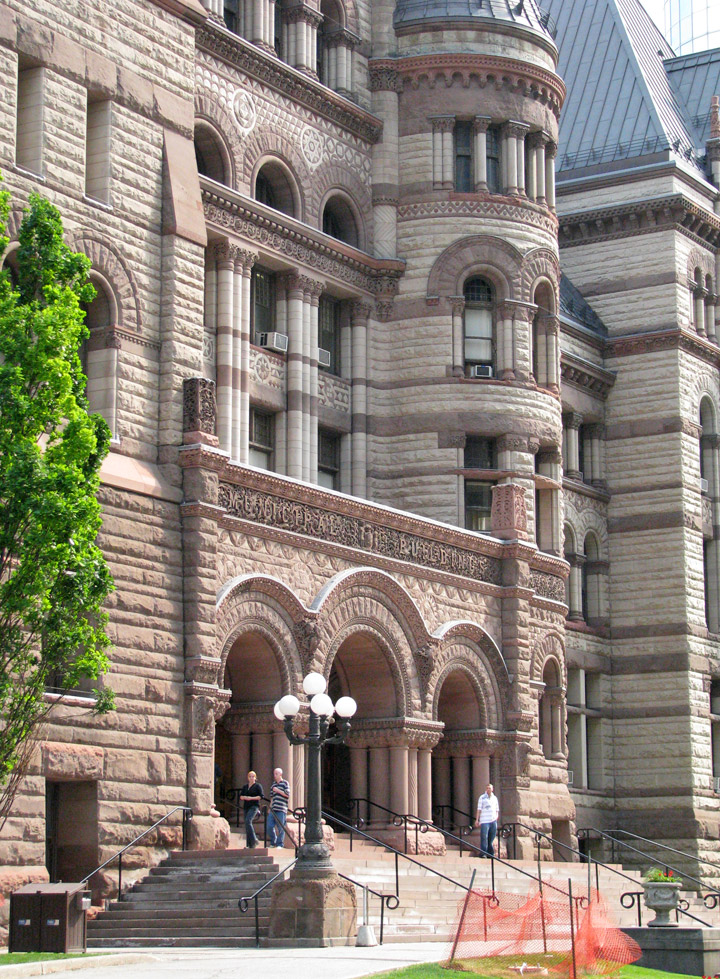
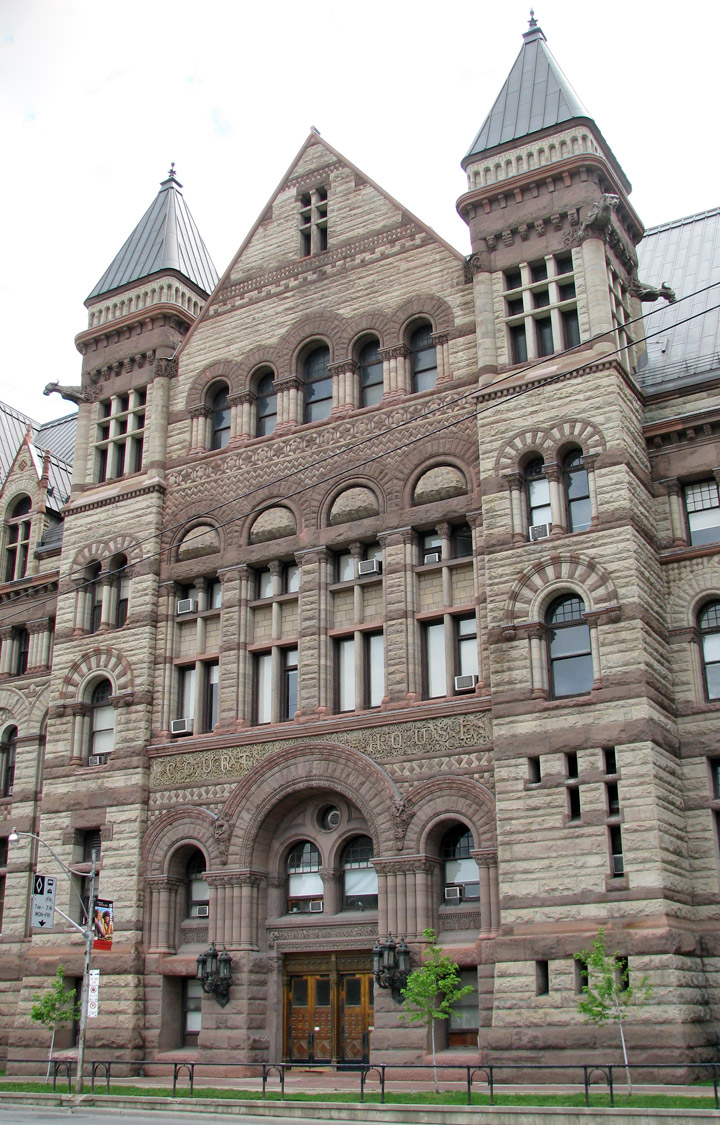
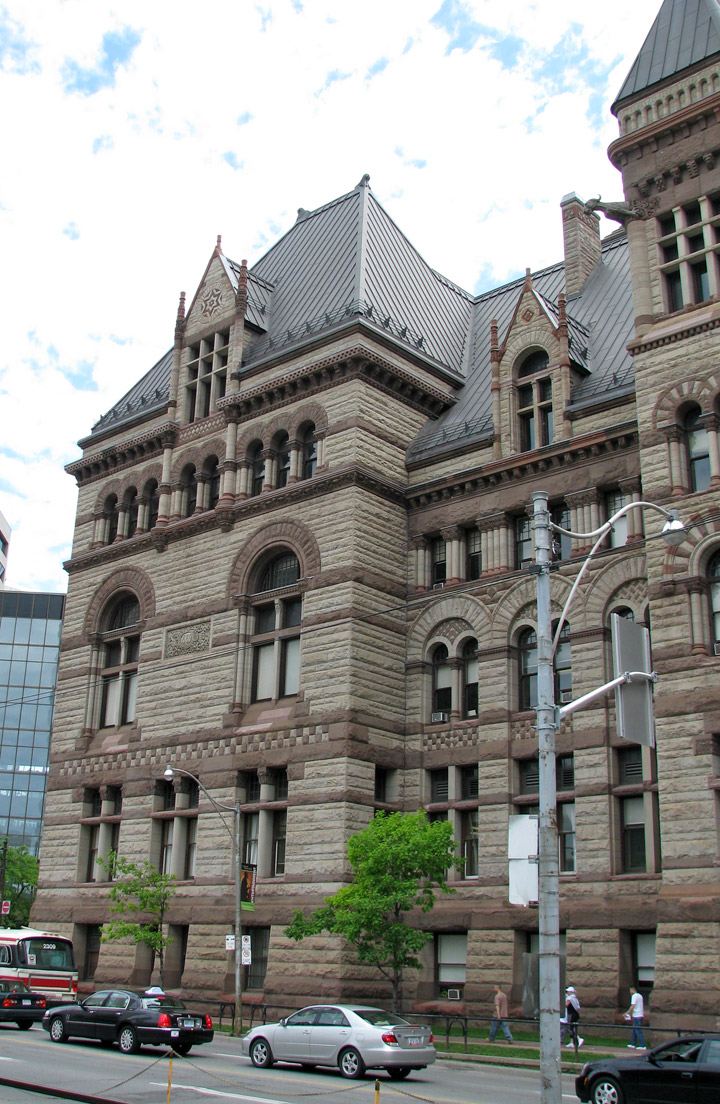

Model of the City of Toronto
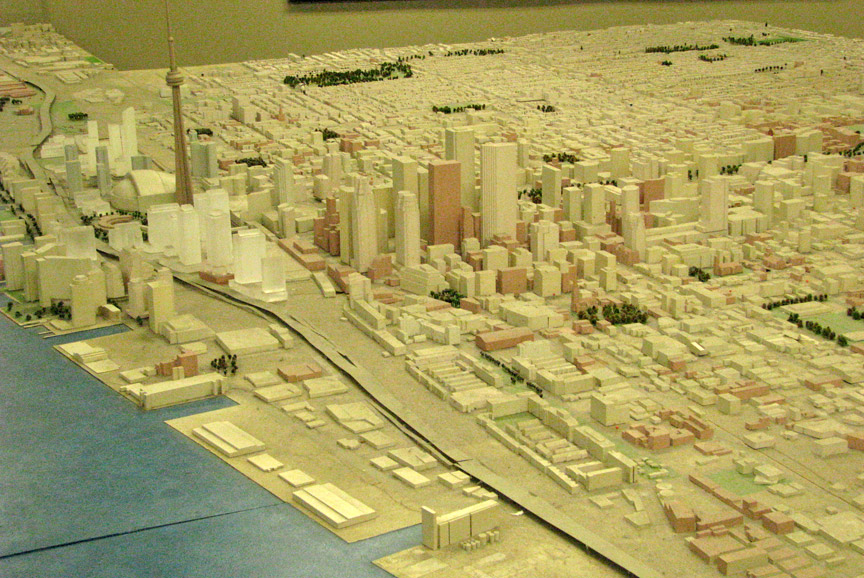
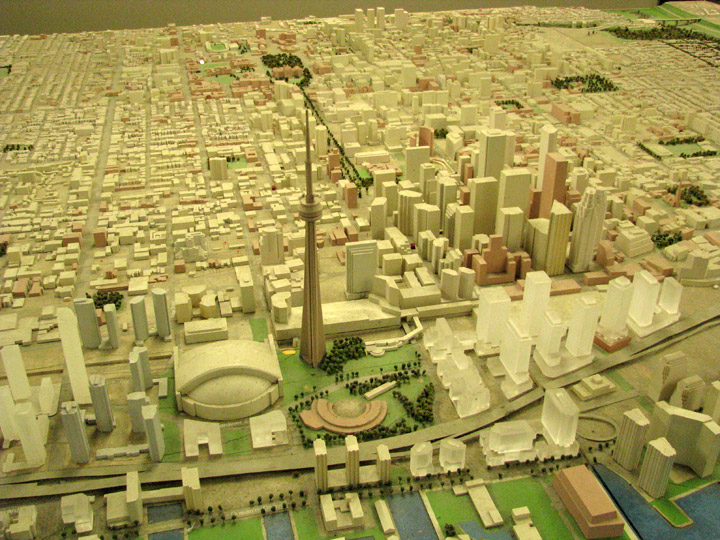
city centre
